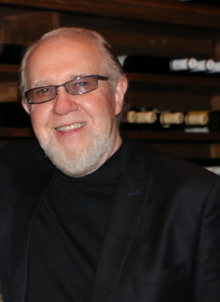Alabama has played a central role in the development of both blues and country music. Appalachian folk music, fiddle music, gospel, spirituals, and polka have had local scenes in parts of Alabama. The Tuskegee Institute's School of Music, especially the Tuskegee Choir, is an internationally renowned institution. There are three major modern orchestras, the Mobile Symphony, the Alabama Symphony Orchestra and the Huntsville Symphony Orchestra; the last is the oldest continuously operating professional orchestra in the state, giving its first performance in 1955.

Daniel Grayling Fogelberg was an American singer, songwriter, and multi-instrumentalist. He is primarily known for his 1980s soft rock hits, including "Longer" (1980), "Same Old Lang Syne" (1981), and "Leader of the Band" (1982).
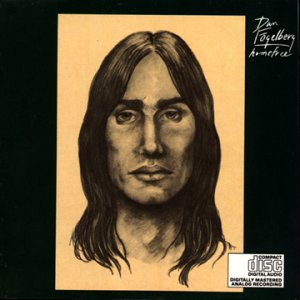
Home Free is the debut album by American singer-songwriter Dan Fogelberg, released in 1972. Upon its original release, Home Free had lukewarm success, but following a later reissue, it was certified platinum by the RIAA for certified sales of 1,000,000 copies.
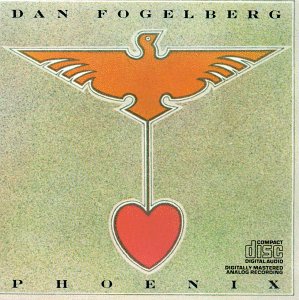
Phoenix is the sixth studio album by the American singer-songwriter Dan Fogelberg, released in 1979. It was produced primarily by Fogelberg and Norbert Putnam.
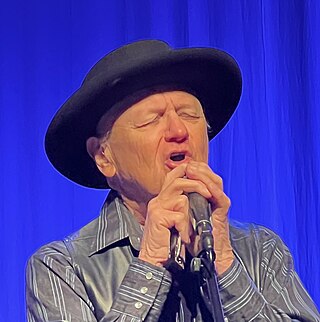
Charlie McCoy, is an American harmonica virtuoso and multi-instrumentalist in country music. He is best known for his harmonica solos on iconic recordings such as Candy Man, He Stopped Loving Her Today, I Was Country When Country Wasn't Cool, and others. He was a member of the progressive country rock bands Area Code 615 and Barefoot Jerry. After recording with Bob Dylan in New York, McCoy is credited for unknowingly influencing Dylan to decide to come to Nashville to record the critically acclaimed 1966 album "Blonde on Blonde".

Elvis Country is the 13th studio album by American singer and musician Elvis Presley, released on RCA Records in January 1971. Recorded at RCA Studio B in Nashville, it reached number 12 on the Billboard 200. It peaked at number six in the United Kingdom, selling over one million copies worldwide. It was certified Gold on December 1, 1977, by the Recording Industry Association of America.
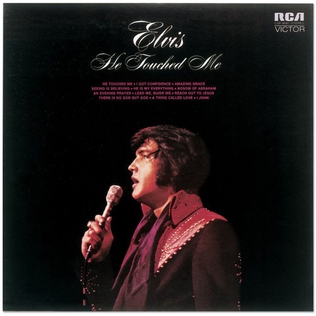
He Touched Me is the 17th studio album by American singer and musician Elvis Presley, released in April 1972. A contemporary gospel music album, it earned him his second of three Grammy Awards. The album was his third and final studio gospel album, and the most contemporary of the three. He Touched Me was certified Gold on March 27, 1992 and Platinum on July 15, 1999 by the RIAA.
Area Code 615 was an American progressive country rock band from Nashville, active in the late 1960s and early 1970s, taking their name from the telephone area code, which at the time covered all of Central and Eastern Tennessee. The band was made up of session musicians, recording only two albums before resuming normal session work. Several of the members were backing musicians for Bob Dylan's Blonde on Blonde and Nashville Skyline albums plus recordings by Billy Swan and The Monkees. They also backed Linda Ronstadt on her Silk Purse album.
The Muscle Shoals Rhythm Section is a group of American session musicians based in the northern Alabama town of Muscle Shoals. One of the most prominent American studio house bands from the 1960s to the 1980s, these musicians, individually or as a group, have been associated with more than 500 recordings, including 75 gold and platinum hits. They were masters at creating a southern combination of R&B, soul and country music known as the "Muscle Shoals sound" to back up black artists, who were often in disbelief to learn that the studio musicians were white. Over the years from 1962 to 1969, there have been two successive groups under the name "Muscle Shoals Rhythm Section" and the common factor in the two was an association with Rick Hall at FAME Studios in Muscle Shoals.

Muscle Shoals Sound Studio is an American recording studio in Sheffield, Alabama, formed in 1969 by four session musicians known as The Muscle Shoals Rhythm Section. They had left nearby FAME Studios in Muscle Shoals to create their own recording facility.

FAME Studios is a recording studio located at 603 East Avalon Avenue in Muscle Shoals, Alabama, an area of northern Alabama known as the Shoals. Though small and distant from the main recording locations of the American music industry, FAME has produced many hit records and was instrumental in what came to be known as the Muscle Shoals sound. It was started in the 1950s by Rick Hall, known as the Founder of Muscle Shoals Music. The studio, owned by Hall until his death in 2018, is still actively operating. It was added to the Alabama Register of Landmarks and Heritage on December 15, 1997, and was listed on the National Register of Historic Places in 2016. The 2013 award-winning documentary Muscle Shoals features Rick Hall, the Muscle Shoals Rhythm Section, and the Muscle Shoals sound originally popularized by FAME.
David Paul Briggs is an American keyboardist, record producer, arranger, composer, and studio owner. Briggs is one of an elite core of Nashville studio musicians known as "the Nashville Cats" and has been featured in a major exhibition by the Country Music Hall of Fame in 2015. He played his first recording session at the age of 14 and has gone on to add keyboards to a plethora of pop, rock, and country artists, as well as recording hundreds of corporate commercials.
Jerry Kirby Carrigan was an American drummer and record producer. Early in his career he was a member of the original Muscle Shoals Rhythm Section and later worked as a session musician in Nashville for over three decades. His style of drumming with a loose, deep-sounding snare drum melded country music with an R&B feel and helped develop a Nashville sound known as "Countrypolitan". His drumming is heard on many recordings which have become classics, some listed below. He recorded with Elvis Presley, Johnny Cash, Charley Pride, Jerry Lee Lewis, Ray Stevens, Kenny Rogers, George Jones and many others. He recorded with non-country artists as well, including Henry Mancini, Al Hirt, Johnny Mathis, and the Boston Pops Orchestra. In 2009 he was inducted into the "Nashville Cats", a cadre of top recording musicians chosen by the Country Music Hall of Fame. In 2010 he was inducted into the Alabama Music Hall of Fame. Carrigan was inducted into the Musicians Hall of Fame and Museum in 2019.
Donald Ray Fritts was an American session musician and songwriter. A recording artist in his own right, he was Kris Kristofferson's keyboardist for over forty years. In 2008, he was inducted into the Alabama Music Hall of Fame.

Roe Erister "Rick" Hall was an American record producer, songwriter, and musician who became known as the owner of FAME Studios in Muscle Shoals, Alabama. As the "Father of Muscle Shoals Music", he was influential in recording and promoting both country and soul music, and in helping develop the careers of such musicians as Aretha Franklin, Otis Redding, Duane Allman and Etta James.

Jimmy J. Hughes is an American former rhythm and blues singer, whose biggest successes in the mid-1960s, notably his hit "Steal Away", were important in the early development of the Muscle Shoals music industry.
Quad Studios Nashville was a four-studio recording facility established as Quadrafonic Sound Studio in 1971 on Music Row in Nashville, Tennessee, US. The studio was the location of numerous notable recording sessions, including Neil Young's Harvest, Jimmy Buffett's "Margaritaville", Joan Baez' "The Night They Drove Old Dixie Down", and Dobie Gray's "Drift Away". The studio's location has been the home of Sienna Recording Studios since 2014.

The Musicians Hall of Fame and Museum (MHOF) in Nashville honors all musicians regardless of genre or instrument. The MHOF timeline starts with the beginning of recorded music and inductees are nominated by current members of the American Federation of Musicians and by other music industry professionals.

Robert Ford Ogdin is a Nashville-based recording session pianist. He is best known as a member of Elvis Presley's TCB band. He performed on 20 of Presley's recordings and accompanied him on 45 live shows until Presley's death in 1977. Ogdin's piano playing was synchronized with archival footage of Presley's vocal performance on "Unchained Melody" in the 2022 motion picture, Elvis directed by Baz Luhrman. Ogdin's experiences during the Presley tours have been chronicled in a four-part series of video interviews by Billy Stallings.
"Steal Away" is a 1964 R&B hit and Top 40 crossover song written and recorded by Jimmy Hughes. It was the first single recorded at FAME Studios in Muscle Shoals, Alabama.
